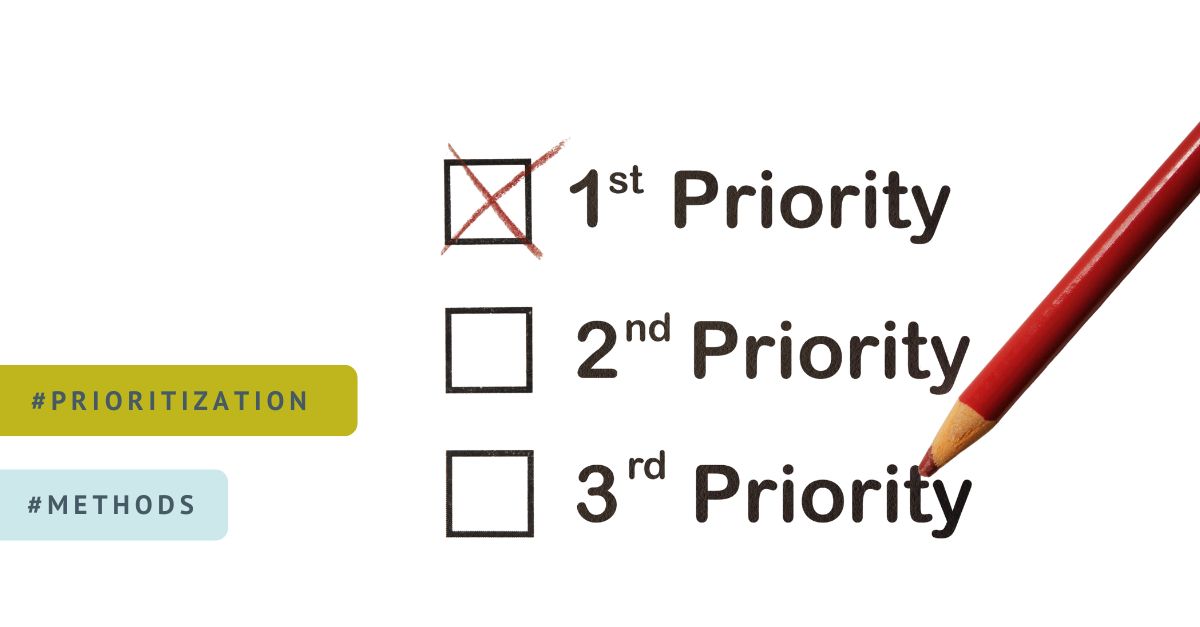
Project, Program, and Portfolio Prioritization
Both in private life and in business, the ability to set priorities is crucial to avoid chaos and ensure that limited resources are allocated where they deliver the greatest value. Without clear criteria, any idea or task can become “urgent and important,” leading to constantly shifting deadlines, inflated costs, and frustrated teams. Formal prioritization techniques help to objectively determine the order of work in line with strategic goals and to focus on what really matters.
MoSCoW Method
MoSCoW is a popular approach to prioritizing requirements and features:
- Must-have (M): Minimum Usable Subset — the absolute minimum without which the project cannot succeed (about 60% of scope).
- Should-have (S): Important but not critical; may require temporary workarounds (about 20% of scope).
- Could-have (C): Desired or nice-to-have, but less important (about 20% of scope).
- Won’t-have (W): “Would like but won’t have this time” — out of scope for now.
When to use?
Ideal for Agile teams working in fixed timeboxes to define the Minimum Viable Product (MVP) or release content. It helps prevent scope creep and resolves stakeholder disputes by clearly showing the trade-offs between “musts” and “maybes.”
Weighted Scoring Model
The Weighted Scoring Model allows you to compare diverse projects or features via a point-based system:
- Select evaluation criteria (e.g., strategic alignment, ROI, risk, customer value) and assign each a weight.
- Score each option against every criterion.
- Multiply scores by their weights and sum them to get a final value.
When to use?
At the portfolio or program level, when you need to compare “apples to oranges” — for example, a compliance project versus an innovation initiative. This transparent approach makes it easier to explain why one initiative is prioritized over another.
Eisenhower Matrix
The Eisenhower Matrix divides tasks into four categories based on urgency and importance:
- Urgent & Important: Do immediately.
- Important, Not Urgent: Schedule into your plan.
- Urgent, Not Important: Delegate to someone else.
- Neither Urgent nor Important: Eliminate.
When to use?
For daily tasks or small projects. It’s a quick way for a project manager or team to prioritize a “to-do” list.
WSJF (Weighted Shortest Job First)
Common in the SAFe framework, WSJF calculates priority as the ratio of Cost of Delay to Job Size (duration):
WSJF = Cost of Delay / Job Size (Duration)
The item with the highest WSJF is done first, maximizing return on investment in the shortest possible time.
When to use?
For continuous backlog prioritization in large-scale Agile (e.g., PI Planning in SAFe). It’s great when you want to quickly capture the highest economic value.
Value vs. Effort Matrix
A simple 2×2 chart with Value (or Impact) on one axis and Effort (Cost/Complexity) on the other:
- High Value, Low Effort: Quick wins.
- High Value, High Effort: Major projects.
- Low Value, Low Effort: Fill-ins.
- Low Value, High Effort: Drop these.
When to use?
When organizing a product backlog or idea list. It quickly highlights low-hanging fruit and the biggest bets.
Value vs. Risk Matrix
A similar 2×2, with axes for Value and Risk:
- High Value, Low Risk: Top priority.
- High Value, High Risk: Strategic bets (require mitigation).
- Low Value, Low Risk: Minor tasks if capacity allows.
- Low Value, High Risk: “White elephants,” typically to reject.
When to use?
In evaluating new initiatives, R&D efforts, and your portfolio—helps you spot the “pearls” and avoid the “white elephants.”
Cost of Delay
A quantitative method to estimate how much a business loses for each day a task is delayed. Calculated as:
Cost of Delay per time unit = Expected Value / Time to Deliver
When to use?
In product backlogs and schedule planning, to justify economically why a given item should be expedited.
Bubble Chart
At the PMO or portfolio level, initiatives are visualized as bubbles on a chart:
- X and Y axes: Two key criteria (e.g., Value vs. Risk, Value vs. Cost).
- Bubble size: A third dimension (e.g., project cost or expected ROI).
When to use?
In portfolio reviews, to quickly assess and communicate the spread of projects in terms of value, risk, and investment size.
Kano Model
The Kano Model categorizes features by their effect on customer satisfaction:
- Basic (Must-Be): Expected by customers; absence causes dissatisfaction.
- Performance: The better you deliver, the more satisfied customers become.
- Delighters: Unexpected surprises that significantly boost satisfaction.
When to use?
In defining a product roadmap and MVP, to balance meeting core expectations with creating competitive differentiation through unique features.
Other Techniques & Choosing the Right Method
- RICE (Reach, Impact, Confidence, Effort): Scores features by reach and certainty.
- Pareto (80/20): Focus on the 20% of work that delivers 80% of value.
- NPV/IRR: For capital projects.
- Buy-a-Feature Voting: Engages stakeholders directly in prioritization.
Choosing a method depends on context:
- Project/Task Level: MoSCoW, Eisenhower, Value vs. Effort.
- Product/Backlog: MoSCoW, Kano, WSJF, RICE.
- Program/Multi-Project: Weighted Scoring, WSJF, Cost of Delay.
- Portfolio/Strategy: Weighted Scoring, Bubble Chart, financial analyses (NPV).
Often these techniques are combined—for example, scoring plus a bubble chart, then MoSCoW within each project. The key is matching the complexity of the technique to the importance of the decision.
Conclusion
Prioritization is a strategic advantage that enables effective resource allocation, enhances decision transparency, and minimizes endless direction changes. Armed with a range of techniques—from simple matrices to advanced economic models—PMOs and managers can focus on what truly delivers value. Choose your methods thoughtfully, mix and match as needed, and always base decisions on clear criteria rather than emotions or hierarchy. That way, your projects, programs, and portfolios will consistently drive real business value.
Get ready for CAPM® certification
If you are a beginner project manager or want to upgrade your skills join our upcoming PMI® Authorized Certified Associate in Project Management (CAPM)® Exam Prep Course.
Prepare for PMP® certification.
If you already have more project management experience sign up for our upcoming PMI® Authorized PMP® Exam Prep Course and receive the Agile in Practice workshop for free.

Sign up for our newsletter. Each week you will receive a letter from us with articles worth reading, tools for working with teams, tips and interesting facts about project management.


